Donald Trump has the Islamic Republic of Iran in his sights. Three months into his presidency, Iran is emerging as a major priority for the new administration. Within the disarray of an unusually chaotic start, the contours of an approach that emphasizes confronting Tehran across a variety of arenas is beginning to take shape.
This has come as something of a surprise, including to some within Iran. Trump’s views on Iran did not feature prominently into his unorthodox campaign for president. Along with every other Republican candidate, he indulged vociferously in ritualistic condemnations of the Iran nuclear deal. However, in contrast to his rivals, he seemed to signal restraint by promising to renegotiate the agreement rather than simply tear it up. And the initial signs that Trump may in fact leave the deal intact have generated hopes of continuity in U.S. policy toward Tehran.
But neither restraint nor continuity on Iran is really in the offing. By design or default, Trump has elevated a national security team that shares an Iran-centric interpretation of the problems that plague the Middle East and threaten vital American interests there. Their preoccupation with Iran is driven by the conviction that the Obama administration’s diplomatic outreach toward the Islamic Republic empowered its leadership and extended its reach across the Middle East.
The logic of the emerging Trump doctrine on Iran essentially inverts Obama’s: The former president gambled on greater engagement as a means of taming Tehran, and saw the hard-won nuclear agreement as proof of the concept. For the deal’s critics, including Team Trump, the prospect of Iranian moderation is an illusion; any incremental gains in setting back Iran’s nuclear program via the deal are offset by the concessions that purchased them and the intensification of Iran’s regional reach that followed. They are convinced that only the application of American power can deter Iran’s most dangerous impulses.
They are convinced that only the application of American power can deter Iran’s most dangerous impulses.
On this singular issue, the new administration is in lockstep with the Republican majority in Congress, as well as with many Democrats who share a conviction that the United States should do more to check the diffusion of Iran’s regional sway. And the apparent American readiness to take on Tehran has already received a warm welcome from Washington’s allies across the Middle East, where Obama’s outreach to Iran incited some sense of betrayal of the traditional U.S. partnerships with Israel and the Gulf states. Trump’s visit there later this month—his first foreign visit since taking office—is already taking on the air of a victory rally among the authoritarian Sunni states of the region.
Bolstered by bipartisan support and regional affirmation, the Trump administration has begun to replace accommodation with confrontation as the guiding principle of U.S. policy toward Tehran, seeking to counter Iran through a multi-front campaign of diplomatic, economic, and military pressure.
Here’s the catch—the Trump mindset on Iran finds its analogue within Tehran, whose leaders have long been convinced of the immutability of American belligerence and are prepared to respond in kind. With mutual hostility, suspicion, and a determination to demonstrate strength ascendant in both capitals, an escalation of U.S.-Iranian frictions will be difficult to avoid and potentially even more difficult to contain. The success or failure of the Trump strategy hinges greatly on Iran and its domestic politics; the outcome of the May 19 presidential election could make or break the administration’s efforts to turn the tables on Tehran.
Trump takes on Tehran
Iran’s emergence as an object of Trump’s hyperkinetic focus owes something to domestic politics. For nearly four decades, the Islamic Republic has provided a reliable bogeyman. Few American politicians would shy away from the opportunity to thump their chests toward a government that hurls cartoonish invectives while sowing chaos across the region. For the Trump administration, Iran holds a special significance—the 2015 nuclear deal represented the seminal foreign policy breakthrough of President Barack Obama, whose approach to the world Trump has deemed “a total failure.”
But turning up the heat on Tehran is not purely, or even mostly, about politics. While the Islamic Republic has a long and complicated history of regional troublemaking, its engagement in conflicts across the broader Middle East has intensified in dangerous ways over the past five years. Tehran’s cultivation of Shiite militias drawn from Iraq and Afghanistan, together with its burgeoning strategic partnership with Moscow, has stoked sectarian backlash and upended the precarious balance in the regional order.
These shifts generated growing unease across Washington’s deep partisan divide and, even among supporters of the previous administration, provoked frustration with President Obama’s seeming unwillingness to undertake any show of American resolve that might jeopardize the early implementation of the deal. A Clinton administration surely would have stepped up the tempo of American efforts to rollback Iran’s reach.
In this sense, Trump’s brusque commentary on the nuclear agreement—“I believe they have broken the spirit of the agreement. There is a spirit to agreements, and they have broken it.”—commands wider purchase in the policy community than he may have intended or appreciated.
The plan for Iran
It may be tempting to reduce Trump’s worldview to no more than the sum of his tweets, but as my colleague Tom Wright has written, he harbors a long-held strategic vision that emphasizes the importance of projecting power and strength. Perhaps more importantly, he has installed an experienced national security team with well-established views. There is some evidence of a disconnect between Trump and his cabinet on core foreign policy issues, but their perspectives converge around the threat posed by Iran. This explains at least in part why tough talk on Iran quickly emerged as one of the new administration’s opening moves.
Trump on the Iran Deal – Curated tweets by BrookingsFP
The Trump game plan on Iran begins with the July 2015 Joint Comprehensive Plan of Action (JCPOA), the nuclear deal that represents the capstone of Obama’s diplomacy and the object of the most intense foreign policy debate of his two terms in office. Despite the fierce Republican criticism of the deal, there appears to be little impetus to dismantle the deal or undertake the tortuous task of trying to formally renegotiate it. Instead, the administration has launched an interagency review of the deal in hopes of finding ways to tighten its constraints on Iran’s nuclear activities and using its terms to police and penalize Tehran wherever possible. Any issues with implementation of the agreement that may arise—such as past episodes when Tehran has temporarily exceeded limits on heavy water stockpiles, for example—will be met with American pressure for consequences instead of compromises.
Stringent enforcement of the nuclear deal is just Trump’s warm-up act on Iran. In deliberate contrast to Obama, the new administration sees the nuclear issue as the tip of the Iranian iceberg rather than the crux of the challenge. That this is a luxury afforded explicitly because of Obama’s determination to secure a nuclear deal has not lessened the simmering resentment of the preceding administration’s singular focus on the nuclear issue. Instead, for the key players such as Secretary of Defense James Mattis, the JCPOA and its evident inadequacies only reinforce the need for a more assertive, multi-faceted effort against Iran.
One important component of that campaign will play out on the ground across the region and in the waters of the Persian Gulf. The regional balance of power represents the true endgame for the White House, whose national security staff has experienced Iran’s cross-border capabilities up close in Iraq. Gen. Michael Flynn, who briefly served as Trump’s national security advisor, previewed this in a bristling statement from the White House podium shortly before he was dismissed from his post. Flynn’s warning that the administration was “putting Iran on notice,” sought to convey that Trump is prepared to respond with force to provocations by Iran or its proxies.
Flynn’s departure has not altered the White House’s intention to push back more forcefully against Iran across the region, where Iranian assistance to militants is intensifying. Last month’s U.S. missile strike against a Syrian airfield was meant to signal the new administration intends to swap Obama’s lawyerly risk aversion with a readiness to invest American presence, credibility, and leadership in the struggle for dominance that is underway across the Middle East.
As my colleagues have commented, Trump’s opening move on Syria was more posturing than policy, but it begins to signal a new American readiness to acknowledge and address what Tehran has wrought across the region. This will likely produce stepped-up efforts to interdict Iranian resupply to regional militants, additional weapons sales to Saudi Arabia and other Sunni states, and an expanded U.S. military footprint in the Gulf. In key regional battlegrounds, the White House is pushing for a more prominent role for U.S. forces, with proposals that range from establishing “safe zones” in Syria to expanding counter-terror operations in Yemen.
To complement American pressure around the JCPOA and in the region, the administration will revert to the toolkit that served its predecessors well during the prolonged nuclear crisis: economic pressure. After a generation of inefficacy, sanctions served as a silver bullet in the effort to prevent Iran from crossing the nuclear threshold, and many of the deal’s opponents expressed frustration that this newfound leverage was ceded on the cheap.
The first step in reconstituting that leverage is reversing Obama’s post-deal efforts to facilitate Iran’s post-sanctions reentry to the global economy, which the prior administration believed would reinforce Tehran’s commitment to the bargain. Trump’s election instigated new hesitancy among prospective investors, and the administration’s rhetoric has intensified it by exacerbating uncertainty about the future of the deal and the potential risks of investing in Iran. In addition, Washington will almost certainly turn up the heat by establishing new sanctions on the basis of Iran’s non-nuclear threats. Several new bills propose penalties on Tehran over the latest in a series of controversial missile tests, and their provisions are deliberately designed to cast a wide shadow over Iran’s post-deal efforts to attract foreign investment and boost its economy. Some new measures will eventually find their way to President Trump’s desk.
In this way, sanctions constitute an important piece of the Trump game plan on Iran. Critics of the deal have long envisioned reconstituting the nuclear-era sanctions regime on other grounds, and Tehran is almost certain to continue delivering the provocations to justify new measures. Perhaps more importantly, sanctions also serve a domestic political purpose; unless Trump opts to breach the nuclear deal explicitly, he will personally have to sign waivers to sustain the sanctions relief that was part of Washington’s JCPOA obligations. A robust set of new sanctions would give the president the necessary political cover to distract from what might otherwise be perceived as a surrender of his campaign rhetoric on the nuclear deal.
Beyond its efforts around the deal and the region, Team Trump is seeking to change the tone on U.S. messaging toward Tehran in ways designed, at minimum, to bolster internal critics of the Iranian government and generally seek to “delegitimize” the ruling system. In this vein, White House officials reportedly edited the annual U.S. statement commemorating the Persian New Year in March to remove any references to the Islamic Republic or its leadership, in deliberate contrast to the Obama-era Nowruz greetings.
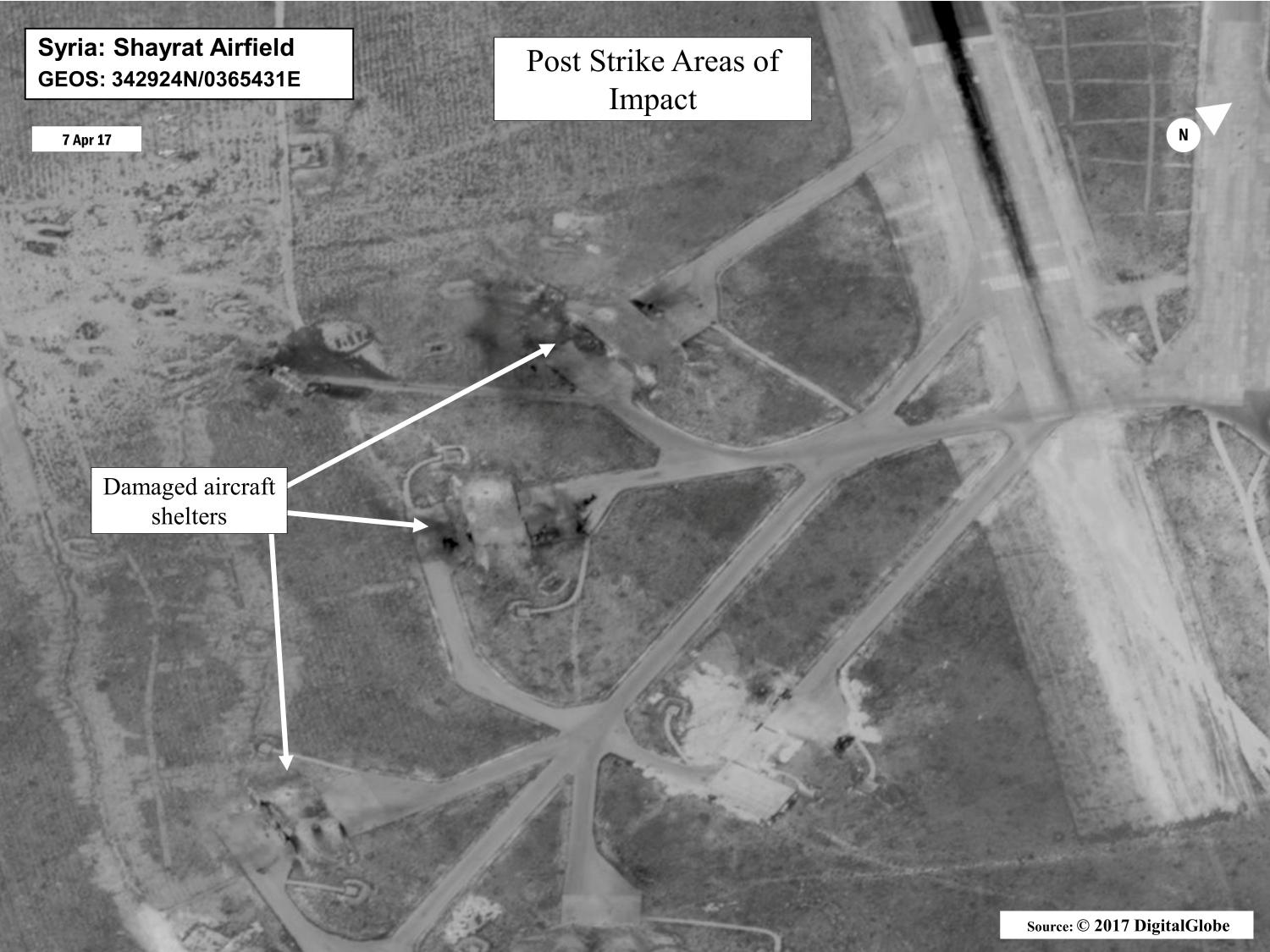
Some serious risks
So far, Trump has undertaken few specific initiatives on Iran, slowed by a bureaucracy that is nowhere near fully staffed and diverted by efforts to galvanize early progress on his domestic agenda and contend with a more urgent crisis emanating from North Korea. Still, the Middle East has a way of reasserting itself on the priority list of American presidents, and thanks to developments in Syria and Yemen as well as the mechanics of sustaining the deal, the issue of Iran once again is looming large.
[T]he Middle East has a way of reasserting itself on the priority list of American presidents.
In taking on Tehran, Washington cannot ignore the prospective fallout. Supporters of the nuclear deal fear that increased American pressure may prompt the Iranians to walk away from the bargain and begin reconstituting their nuclear infrastructure. That’s a real risk; an earlier attempt to negotiate constraints on Iran’s nuclear program collapsed in 2005 as Iranian leaders soured on the terms.
Still, preserving the deal cannot become the sine qua non of America’s Middle East policy. Blunting Iran’s nuclear ambitions necessarily remains a high priority, but it is not the sole or even the primary U.S. interest in the region. And without a more forceful effort to deter and contain Tehran’s involvement in regional conflicts, the JCPOA’s nonproliferation gains will increasingly be offset by violence, instability, and sectarianism.
For now, Tehran seems to be exercising its own version of strategic patience. Cooler-headed Iranian officials have warned against falling into a trap, since Iran’s abrogation would expose the country to “snap back” United Nations sanctions. If the administration’s emerging confrontational stance toward Tehran becomes reality, the Iranians will retaliate asymmetrically against American interests and allies in ways that are not simple to predict or mitigate against and that can instigate a cycle of escalation. There are a host of other concerns:
- Intensifying U.S. military engagement in regional conflicts will generate more civilian casualties and other prospective blowback for our operations;
- Sanctions will exacerbate frictions with Washington’s European and Asian partners, who are loathe to walk away from Iran’s lucrative market;
- Our Gulf allies can contribute little beyond cheerleading and will hedge in their own approach to Iran, particularly as Trump’s plan for Iran inevitably fails to live up to their stratospheric expectations; and
- Ham-fisted American public diplomacy will backfire in the face of Iranians’ well-tended sense of nationalist umbrage, which almost always outweighs their frustrations with their own government.
The bottom line is that nearly four decades of dealing with the Islamic Republic makes clear that American pressure alone will not conclusively resolve the challenges posed by Iran; rather, in the short term, a more assertive U.S. posture will almost surely exacerbate them. For this reason, the Trump administration must be judicious in assessing and mitigating against risks, frank in acknowledging them to the American people, and deliberative in working with allies and partners to begin to build the kind of durable coalition of influential actors that generated opportunities for negotiation on the nuclear crisis.
How this incipient U.S.-Iranian confrontation will unfold depends on evolving domestic dynamics in both countries. The outcome of Iran’s upcoming presidential election will shape the context for U.S. policy: a reelection of Hassan Rouhani will reinforce support for Iran’s rehabilitation, in economic terms at least. If his main rival, a protégé of the country’s supreme leader and a serial human rights abuser, pulls off an upset victory, it will signal a hardening of the domestic climate—but also an opportunity for Washington to build multilateral support for new pressure on Tehran.
By the same token, much depends on what happens within the Trump administration itself. The unprecedented delays in filling senior-level positions in the national security bureaucracy has contributed to real difficulties for the new U.S. president, both in terms of implementing his stated policies and in communicating a comprehensible vision of America’s role in the world. If the administration can overcome the internecine fissures and organizational paralysis of its early months and focus on formulating and implementing a coherent strategy for confronting Iran, it could mount a serious challenge to the Islamic Republic’s regional aspirations. Conversely, an administration that remains disjointed and whose incipient foreign policy agenda continues to be overtaken by domestic scandal and international commotion would accelerate the devolution of the regional order and open the door to greater Iranian influence. The ball is in Washington’s court, as the latest round in the long-running face-off between the United States and the Islamic Republic gets underway.
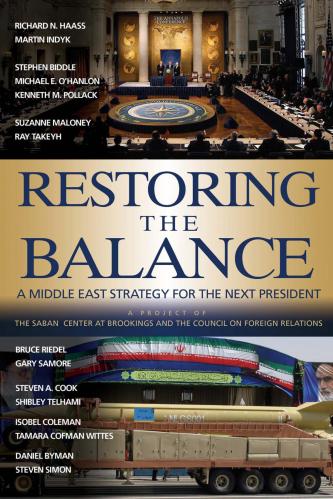
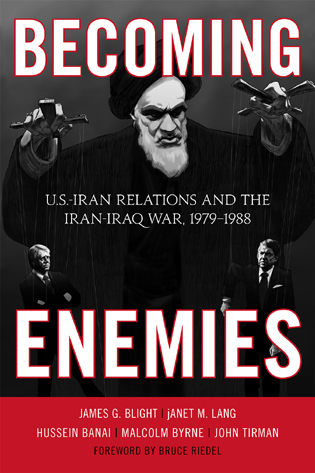
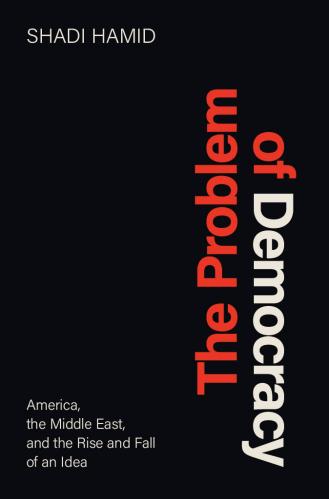
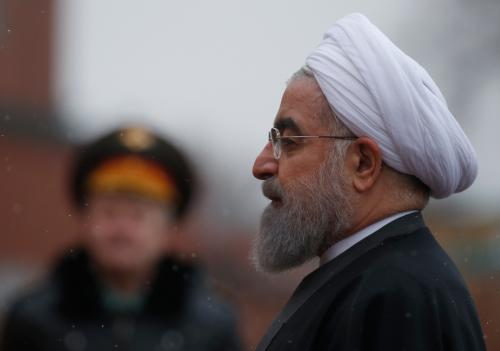



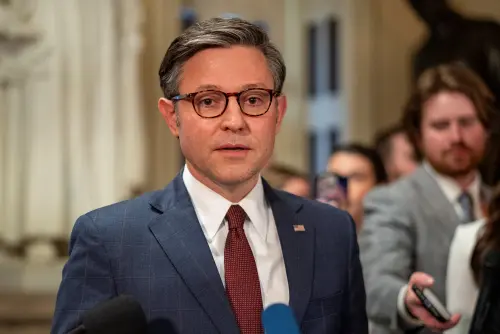
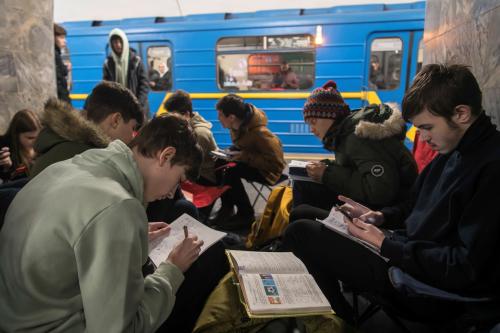
Commentary
Under Trump, U.S. policy on Iran is moving from accommodation to confrontation
May 11, 2017